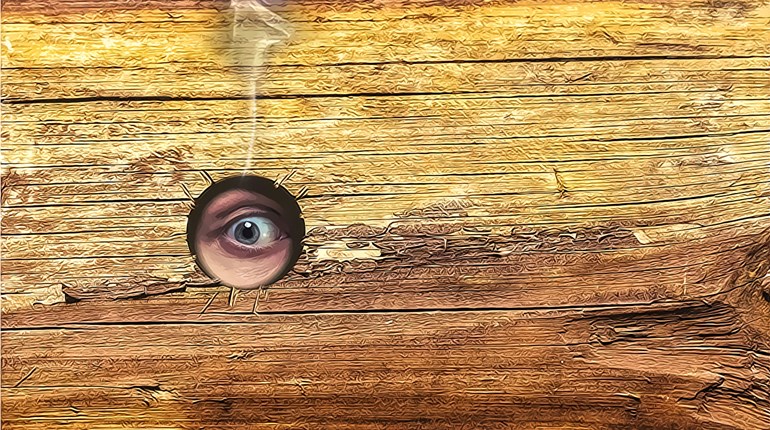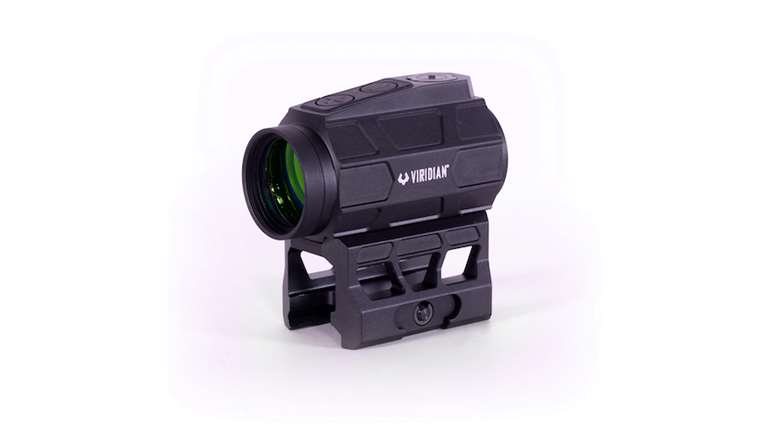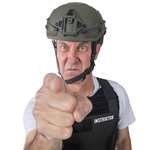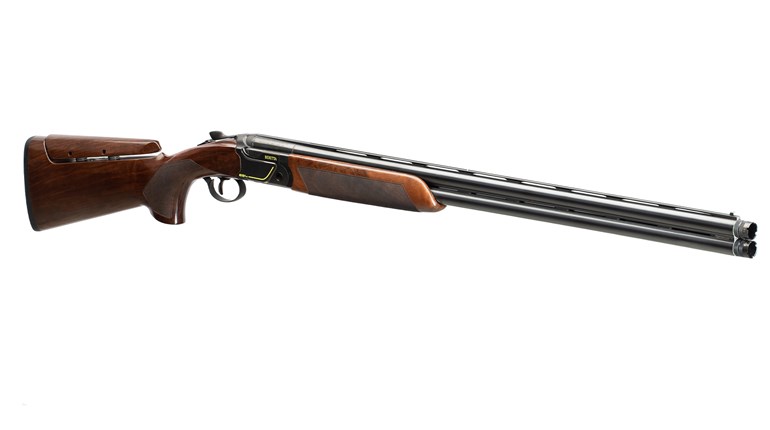** When you buy products through the links on our site, we may earn a commission that supports NRA's mission to protect, preserve and defend the Second Amendment. **
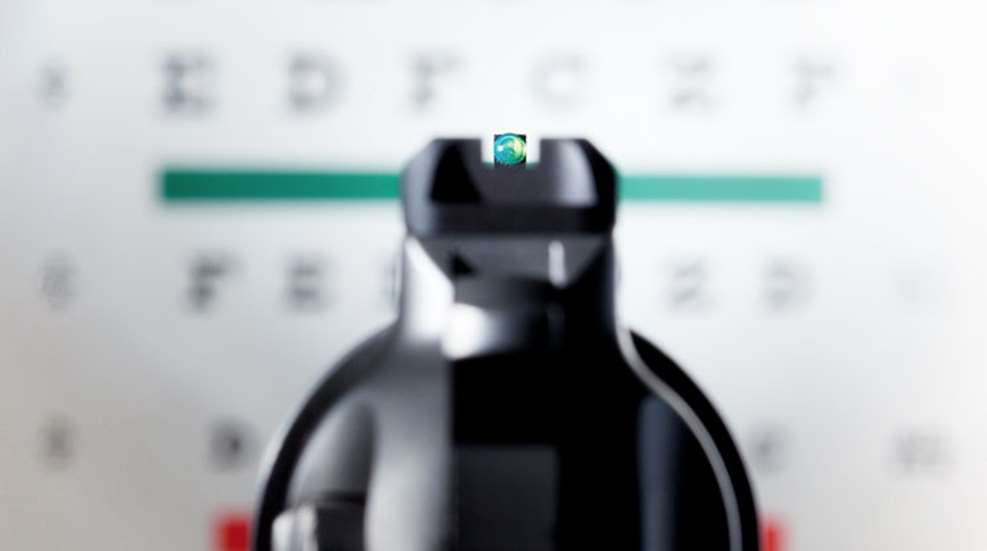
“Wow, you must have been practicing. You smoked those pistol targets!” I had just finished a stage at the MGM Iron Man 3-gun competition, and the guy talking was Ergo Grip’s Matt Foster.
“Nope,” I said. “No time for practice, but I can see the sights again. It’s amazing how much better that makes everything,”
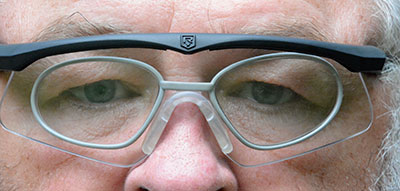 The problem is called presbyopia. For most people, it starts in their early 40s, and there is no prevention and no cure. It’s first noticed by most adults when they start to experience problems with their ability to see clearly at close distances, particularly in dim light. Presbyopia will continue to progress over time until about age 60, when it stops. It happens in part because the lenses in our eyes become less flexible and lose the ability to reshape enough for close focus. The old joke is, “my eyes are fine, but my arms are too damn short.”
The problem is called presbyopia. For most people, it starts in their early 40s, and there is no prevention and no cure. It’s first noticed by most adults when they start to experience problems with their ability to see clearly at close distances, particularly in dim light. Presbyopia will continue to progress over time until about age 60, when it stops. It happens in part because the lenses in our eyes become less flexible and lose the ability to reshape enough for close focus. The old joke is, “my eyes are fine, but my arms are too damn short.”
I first noticed it when I was having trouble reading cartridge-case heads when I was about 45 years old. Then, the print in books became hard to see, particularly in poor light. Some cheap, “cheater” glasses from the marts solved the problem. I bought them in packs of three and kept them all over the place. By the time I was in my mid-50s, it had progressed to the point where pistol sights were getting hard to see, but I was in denial.
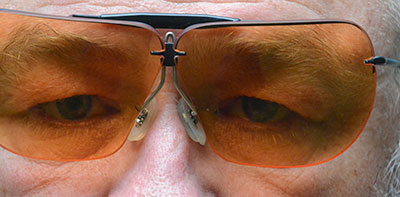 I have been blessed with good eyesight all my life. I can remember years ago when I first started shooting pistols, I couldn’t figure out what all the writers were talking about. They said focus on the front sight and let the rear sight and the target blur. To me they were all sharp. Even when I was shooting IHMSA with targets as far as 200 meters away, I could see the target and both sights perfectly clear. I figured it was just another one of those many “facts” gunwriters wrongly repeated over and over.
I have been blessed with good eyesight all my life. I can remember years ago when I first started shooting pistols, I couldn’t figure out what all the writers were talking about. They said focus on the front sight and let the rear sight and the target blur. To me they were all sharp. Even when I was shooting IHMSA with targets as far as 200 meters away, I could see the target and both sights perfectly clear. I figured it was just another one of those many “facts” gunwriters wrongly repeated over and over.
Then, against my will, the years passed, and with age came understanding. I stubbornly tried to ignore it, but my shooting suffered as a result.
Had I realized how simple and effective the solution was, I would have done something sooner. I borrowed a plastic “blue gun,” from my friend Paul Pluff at Smith & Wesson and took it to my optometrist. A toy gun would no doubt work as well. Simply hold the pistol in your shooting position, and the doc will find the prescription that allows the clearest view of the front sight. The doctor will also determine the pupillary distance—the distance between pupil centers—usually expressed in millimeters. This info is used by the glasses provider to make a lens for your exact requirements.
There are other factors the doctor will look at when doing an eye exam, which is a good idea anyway. For example, this is a good time to deal with any astigmatism. But, for our needs, we are looking at the amount of correction needed to make the front sight appear sharp again.
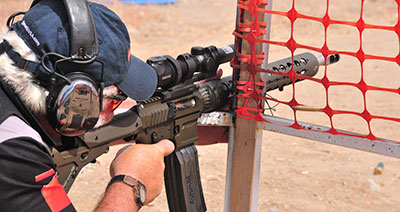 The values are expressed in diopters. The higher the number of diopters, the more the lens refracts, or bends, light. A diopter is the reciprocal of the focal length in meters. If a lens has a focal length of 1⁄3 meter, it is a 3-diopter lens. The needed amount of correction varies with the distance for close work. If you have enough correction to read a book, it will be too much for shooting a pistol. That’s why it’s important to learn the exact amount of correction needed for the distance from your eye to the pistol sights.
The values are expressed in diopters. The higher the number of diopters, the more the lens refracts, or bends, light. A diopter is the reciprocal of the focal length in meters. If a lens has a focal length of 1⁄3 meter, it is a 3-diopter lens. The needed amount of correction varies with the distance for close work. If you have enough correction to read a book, it will be too much for shooting a pistol. That’s why it’s important to learn the exact amount of correction needed for the distance from your eye to the pistol sights.
Where it gets complicated, though, is while the front sight will be sharp and clear, that probably is not the best setting for your shooting glasses. Remember, you also need to be able to see the target and the rear sight. If you are a bullseye shooter, the distance from the front sight to your eye will never vary, so it would make sense to set the correction for the clearest view of the front sight when the pistol is in the shooting position. For any other type of pistol shooting—particularly for action shooting where targets, shooting stances and positions will vary—you will want to find a compromise.
Like most handgun guys, I shoot from a wide range of positions. My own version of the modified Weaver stance is the most common I use, but like any serious pistol shooter, I practice one-hand shooting, with both strong and weak hand. Each different shooting stance and style positions the sights at a different distance from my eye. Any change in position also changes the distance from the eye to the sights. Shooting from a barricade, prone or sitting also varies the eye-to-sight distance. Also, if your distance vision is good, the more correction you add to the glasses, the less clearly you will be able to see the target. So, when we factor in all these things, finding the middle ground in correction is the key to making it all work.
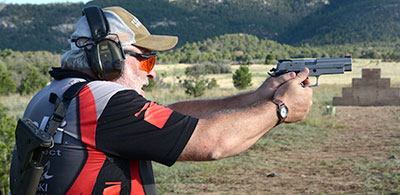 In my case, my best vision in my shooting stance with a 5-inch pistol was +1.00 correction. But in the interest of compromise and on the advice of people smarter than me on these topics, I elected to back down a little bit and use a +.75 correction. This not only makes both the front and the rear sight clearer, but also allows a relatively clear view of the target.
In my case, my best vision in my shooting stance with a 5-inch pistol was +1.00 correction. But in the interest of compromise and on the advice of people smarter than me on these topics, I elected to back down a little bit and use a +.75 correction. This not only makes both the front and the rear sight clearer, but also allows a relatively clear view of the target.
Backing off on the correction slightly also works better with a wide range of handguns. While I compete in 3-gun and USPSA with a 5-inch-barreled pistol, I shoot everything from snub-nose J-frame revolvers to long-barreled, single-action handguns. The distance from my eye to the front sight is very different with my J-frame carry gun than it is with my 7.5-inch Freedom Arms .454 Casull, so a middle ground on the correction makes sense.
The best solution is to have the correction added to your shooting-eye side only. That leaves your vision unchanged with the other eye. I am one of those rare folks who shoots handguns with my left hand and long guns right handed. I recognize most shooters will use the same eye for all types of firearm, and therefore this method of correction may cause problems with long guns.
A scope can be focused for clear vision when using glasses, and when shooting iron-sighted rifles with the correction, it has actually helped me see the sights better. Shotguns might be a problem, but I have practiced shooting “weak side” with the shotgun, keeping the correction in place, and have found it does not seem to have a significant effect on my performance.
Now if I just could find a magic solution for the other age-related matters—like running slower or creaking knees—I might win more matches.
Where to Order Corrective Shooting Glasses
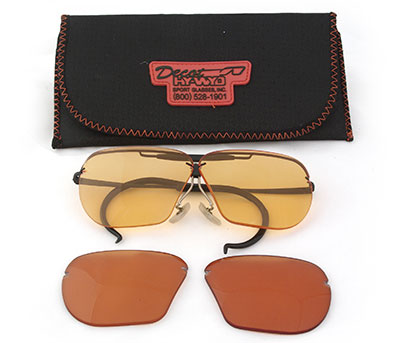 Where to Order Corrective Shooting Glasses Of course, we want to use high-quality shooting glasses, since their main job is to protect our eyes from injury. Just send the provider your prescription and they can make the glasses. I had two sets of glasses made. The first was from Decot Hy-Wyd Sport Glasses. These glasses are well known among shotgun shooters, and they are a great choice for action-pistol shooters, too. They are adjustable for how high they ride on the face and are out away from your face enough, they are less likely to fog on a hot day. The glasses include side panels for additional protection. In addition to the correction, I had a bifocal added in my reading strength. This is a huge help when I need to adjust sights, clear jams or perform any other function where I must be able to see up close. The only downside is on those rare occasions when I am shooting a 3-gun match where a masochistic stage designer has me shooting a rifle from some weird position, and I find myself looking through the bifocal section. So, I simply ordered another set of lenses without the bifocal, which pop into the frame in seconds.
Where to Order Corrective Shooting Glasses Of course, we want to use high-quality shooting glasses, since their main job is to protect our eyes from injury. Just send the provider your prescription and they can make the glasses. I had two sets of glasses made. The first was from Decot Hy-Wyd Sport Glasses. These glasses are well known among shotgun shooters, and they are a great choice for action-pistol shooters, too. They are adjustable for how high they ride on the face and are out away from your face enough, they are less likely to fog on a hot day. The glasses include side panels for additional protection. In addition to the correction, I had a bifocal added in my reading strength. This is a huge help when I need to adjust sights, clear jams or perform any other function where I must be able to see up close. The only downside is on those rare occasions when I am shooting a 3-gun match where a masochistic stage designer has me shooting a rifle from some weird position, and I find myself looking through the bifocal section. So, I simply ordered another set of lenses without the bifocal, which pop into the frame in seconds.
Decot Hy-Wyd Sport Glasses; sportglasses.com
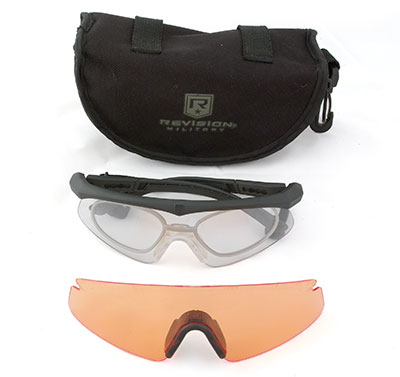 The other glasses are from Revision Military, located in my home state of Vermont. They are providers of glasses to the military and have a reputation for high-end eye protection. While visiting the company’s facility during a media event, I met several law enforcement and military personnel who owe their vision and even their lives to these glasses. Correction is provided in a small “spectacle” that clips on to the nose piece inside the protective glasses. This allows me to switch the correction to use any lens—dark, clear, amber, whatever I need at the moment. Or, I can take the correction out when it’s not needed.
The other glasses are from Revision Military, located in my home state of Vermont. They are providers of glasses to the military and have a reputation for high-end eye protection. While visiting the company’s facility during a media event, I met several law enforcement and military personnel who owe their vision and even their lives to these glasses. Correction is provided in a small “spectacle” that clips on to the nose piece inside the protective glasses. This allows me to switch the correction to use any lens—dark, clear, amber, whatever I need at the moment. Or, I can take the correction out when it’s not needed.
Revision Military; revisionmilitary.com
“Nope,” I said. “No time for practice, but I can see the sights again. It’s amazing how much better that makes everything,”

Revision Military makes protective eyewear that can accommodate an insert holding prescription lenses.
I first noticed it when I was having trouble reading cartridge-case heads when I was about 45 years old. Then, the print in books became hard to see, particularly in poor light. Some cheap, “cheater” glasses from the marts solved the problem. I bought them in packs of three and kept them all over the place. By the time I was in my mid-50s, it had progressed to the point where pistol sights were getting hard to see, but I was in denial.

Custom prescription glasses for shooting ensure perfect—and safe—vision, but command a premium price.
Then, against my will, the years passed, and with age came understanding. I stubbornly tried to ignore it, but my shooting suffered as a result.
Had I realized how simple and effective the solution was, I would have done something sooner. I borrowed a plastic “blue gun,” from my friend Paul Pluff at Smith & Wesson and took it to my optometrist. A toy gun would no doubt work as well. Simply hold the pistol in your shooting position, and the doc will find the prescription that allows the clearest view of the front sight. The doctor will also determine the pupillary distance—the distance between pupil centers—usually expressed in millimeters. This info is used by the glasses provider to make a lens for your exact requirements.
There are other factors the doctor will look at when doing an eye exam, which is a good idea anyway. For example, this is a good time to deal with any astigmatism. But, for our needs, we are looking at the amount of correction needed to make the front sight appear sharp again.

One of the biggest challenges in tailoring shooting glasses is the ever-changing distances at which clear vision is required.
Where it gets complicated, though, is while the front sight will be sharp and clear, that probably is not the best setting for your shooting glasses. Remember, you also need to be able to see the target and the rear sight. If you are a bullseye shooter, the distance from the front sight to your eye will never vary, so it would make sense to set the correction for the clearest view of the front sight when the pistol is in the shooting position. For any other type of pistol shooting—particularly for action shooting where targets, shooting stances and positions will vary—you will want to find a compromise.
Like most handgun guys, I shoot from a wide range of positions. My own version of the modified Weaver stance is the most common I use, but like any serious pistol shooter, I practice one-hand shooting, with both strong and weak hand. Each different shooting stance and style positions the sights at a different distance from my eye. Any change in position also changes the distance from the eye to the sights. Shooting from a barricade, prone or sitting also varies the eye-to-sight distance. Also, if your distance vision is good, the more correction you add to the glasses, the less clearly you will be able to see the target. So, when we factor in all these things, finding the middle ground in correction is the key to making it all work.

One of the biggest challenges in tailoring shooting glasses is the ever-changing distances at which clear vision is required.
Backing off on the correction slightly also works better with a wide range of handguns. While I compete in 3-gun and USPSA with a 5-inch-barreled pistol, I shoot everything from snub-nose J-frame revolvers to long-barreled, single-action handguns. The distance from my eye to the front sight is very different with my J-frame carry gun than it is with my 7.5-inch Freedom Arms .454 Casull, so a middle ground on the correction makes sense.
The best solution is to have the correction added to your shooting-eye side only. That leaves your vision unchanged with the other eye. I am one of those rare folks who shoots handguns with my left hand and long guns right handed. I recognize most shooters will use the same eye for all types of firearm, and therefore this method of correction may cause problems with long guns.
A scope can be focused for clear vision when using glasses, and when shooting iron-sighted rifles with the correction, it has actually helped me see the sights better. Shotguns might be a problem, but I have practiced shooting “weak side” with the shotgun, keeping the correction in place, and have found it does not seem to have a significant effect on my performance.
Now if I just could find a magic solution for the other age-related matters—like running slower or creaking knees—I might win more matches.
Where to Order Corrective Shooting Glasses

Decot Hy-Wyd Sport Glasses; sportglasses.com

Revision Military; revisionmilitary.com












